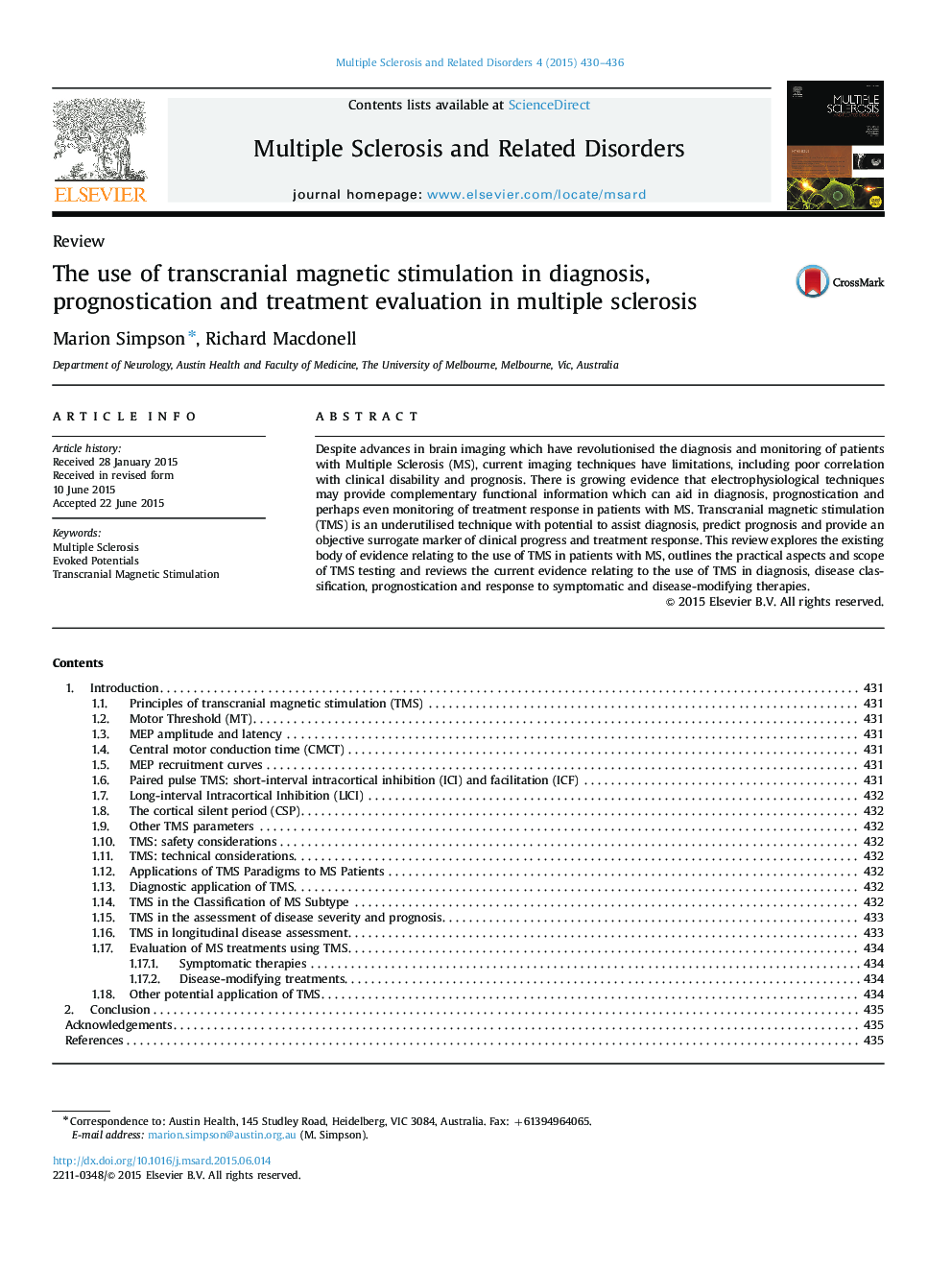| کد مقاله | کد نشریه | سال انتشار | مقاله انگلیسی | نسخه تمام متن |
|---|---|---|---|---|
| 5912701 | 1161446 | 2015 | 7 صفحه PDF | دانلود رایگان |

- TMS has been applied to the study of various aspects of MS.
- Different TMS paradigms can be used in this regard.
- Practical aspects of TMS and specific paradigms are reviewed.
- TMS may have applications in diagnosis, prognostication and disease classification.
- TMS may be used to assess response to various MS therapies.
Despite advances in brain imaging which have revolutionised the diagnosis and monitoring of patients with Multiple Sclerosis (MS), current imaging techniques have limitations, including poor correlation with clinical disability and prognosis. There is growing evidence that electrophysiological techniques may provide complementary functional information which can aid in diagnosis, prognostication and perhaps even monitoring of treatment response in patients with MS. Transcranial magnetic stimulation (TMS) is an underutilised technique with potential to assist diagnosis, predict prognosis and provide an objective surrogate marker of clinical progress and treatment response. This review explores the existing body of evidence relating to the use of TMS in patients with MS, outlines the practical aspects and scope of TMS testing and reviews the current evidence relating to the use of TMS in diagnosis, disease classification, prognostication and response to symptomatic and disease-modifying therapies.
Journal: Multiple Sclerosis and Related Disorders - Volume 4, Issue 5, September 2015, Pages 430-436